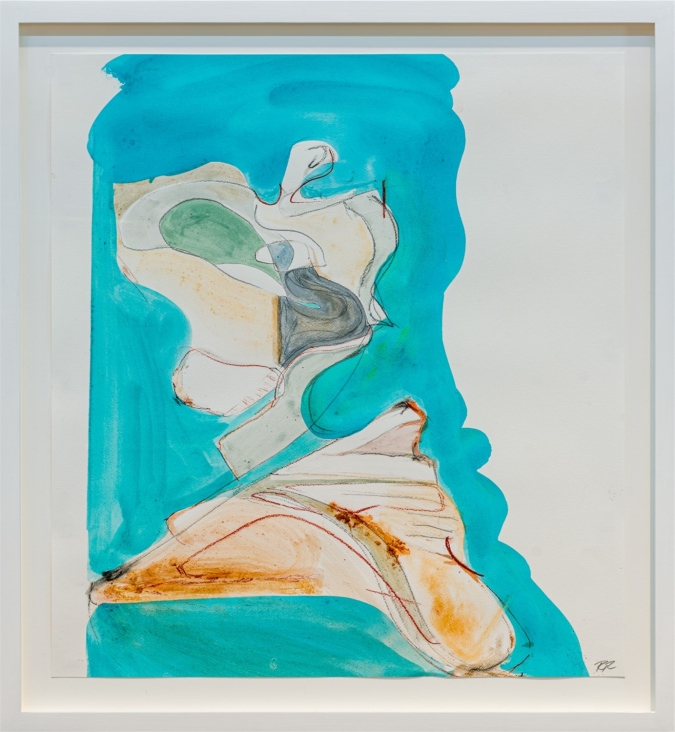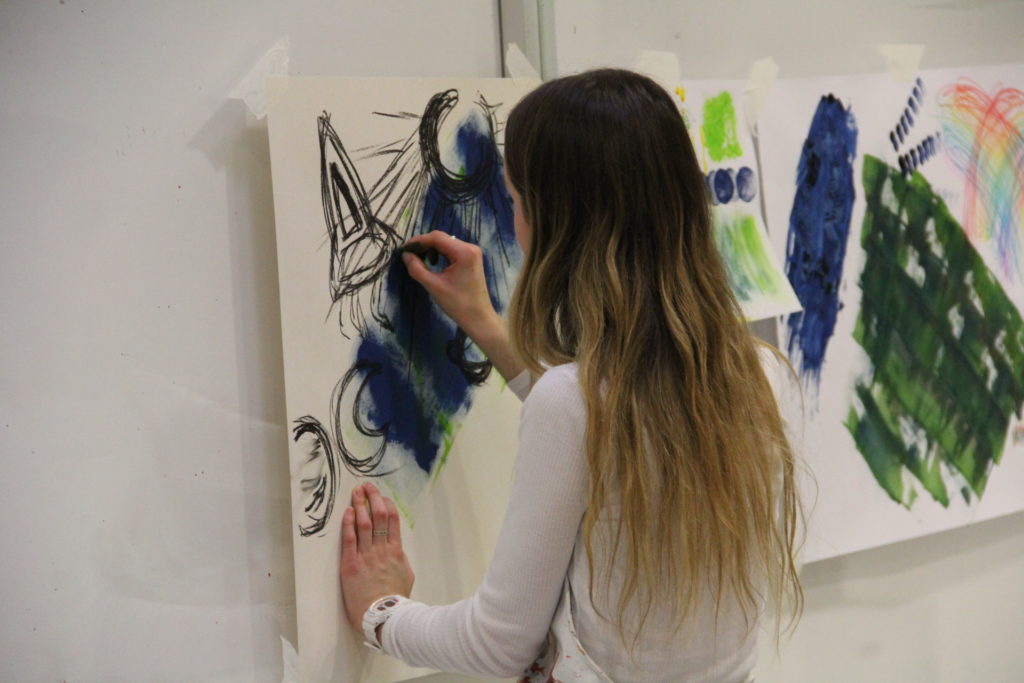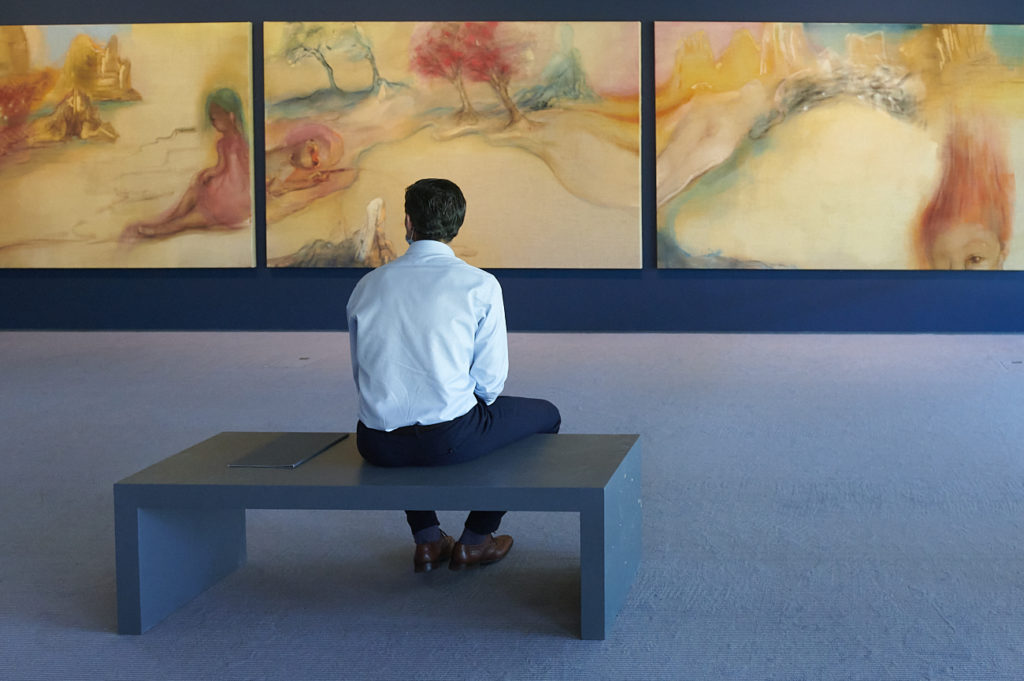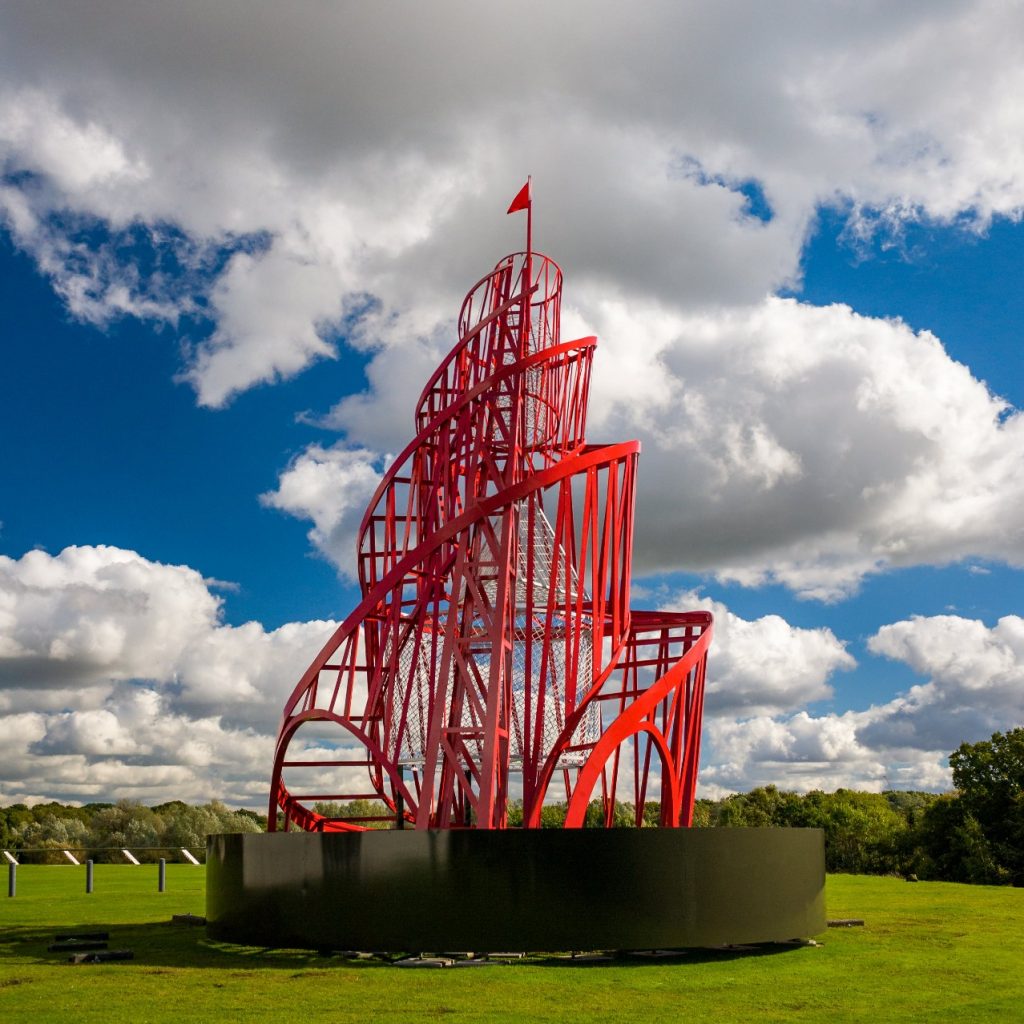Sharing Stories: LGBT Rights Activist on Ro Robertson’s ‘Stack (Body Set in Motion)’
In this interview, Sophie, LGBT rights activist and sea swimmer, talks to us about their relationship with gender and the natural world in response to Ro Robertson’s piece, ‘Stack (Body Set in Motion)’ (2021).

Stack (body set in motion), Ro Robertson, 2021, England.
As part of the creation of the Sainsbury Centre’s first immersive audio experience, Sharing Stories, Bea Prutton (Digital Communication and Creative Curator) and Sára Lapinová (Marketing and Communications Officer) interviewed specialists, artists and those with lived experience connecting them to some of the key objects in our collection. In this interview, Sophie, LGBT rights activist and sea swimmer, talks to us about their relationship with gender and the natural world in response to Ro Robertson’s piece, ‘Stack (Body Set in Motion)’ (2021).
What do you see when you look at this object?
‘When I look at this object, I see a mixture of the elements: water and rock. I also see a human form floating there. There’s a really nice question around where the rock ends and the body begins. This work really captures that feeling of being surrounded by the fluidity of the water when you don’t feel fully attached to your human experience.
I grew up in the Midlands and so, sea swimming is something totally new for me. And I’ve had to learn it as an adult. I remember when I first started doing it, I had a fear of the waves and not being able to see but, over time, it has become an essential practice for me. The sea is more powerful than us, so fear is a very normal response, but it’s so interesting to play with our limits and what you feel comfortable with. It’s a tangible immersion into our experience as humans and our relationship with the natural world.’
With these very visceral ideas about sea swimming in mind, what feelings does this artwork conjure for you?
‘Knowing that this artwork is referencing the queer experience, it conjures up questions and feelings about conceptions of gender. When you’re swimming, and if you’re lucky enough to not have anyone around, you’re not really perceiving yourself in the same way that you would when you are dressed, working and interacting with the day-to-day human world. When you’re swimming, you don’t have to explain yourself to anyone, you don’t have to rationalise how you’re feeling, you can just feel it and allow yourself to be totally immersed in the water. You feel very present in these moments. Your senses are brought in when you have to be aware of the next wave coming or how long you have left of the tide. It highlights how individually free you can be in those nature-based experiences, because you can just be as free and genderless as nature itself.’
How does the sea represent or enable your own personal freedom, and how important do you think nature is as a queer space?
‘Nature is queer. It’s interesting how we create this binary narrative on top of literally everything because science has been viewed from a particular patriarchal lens. It’s only now that we’re starting to unpick that, that we can see that actually, animals don’t necessarily have this nuclear family that we’ve been taught about. Look at, for example, dolphins. Dolphins are often gay, and there have been studies into dolphins that look at how the male dolphins will pleasure each other. In previous scientific texts, this has been talked about as an act of “getting ready for their heterosexual relationships” or being “friendly”, thus not acknowledging that, actually, nature is queer.
I’m loving this wave of queer ecology that we’re seeing, which is introducing different ways of viewing the world that take us out of our assumptions and misconceptions and enabling us to see more clearly how wonderfully unique and vibrant the entire natural world is. I feel like that is how my queerness is now coming to be, and the way I’m finding freedom is through that deeper connection with the natural world. Moving to Cornwall a couple of years ago, I was a bit nervous that I would be removing myself from typically queer spaces. I live in a town in Cornwall where I feel that there’s not much queer representation around me, it’s kind of hard to find outwardly queer spaces. So, it does become your relationship with nature that takes the place of that community. I’d love to see more spaces where people feel like this is where we could come and gather. There is, I think, an issue that we often only feel safe in cities and urban environments, because that’s where we tend to gather and support each other. But I’m a real advocate for trying to push past those spaces that typically are substance-centred, like clubs and bars. But making sure that we have access to the natural world is super important for our own wellbeing and the wellbeing of the planet. Because unless we have these opportunities to connect that freedom, and unless you really develop that deep, loving bond with the natural world, and we lose that impetus to keep fighting for it. I really love that connection between queer liberation and liberation of the planet, because it’s one and the same thing.’
In what way do you connect to this object? What does it remind you of what does it represent to you? And how is it relevant to you and your life story?
‘I feel like the subject in this work could be me. I see myself in that lovely form. I suppose that applies to anyone who has a connection with nature, with the ocean. It takes me back to just an amazing experience I had in the summer, when my local beaches were empty, which is very, very rare. The sea was totally calm. I was able to just get in and float as the sun went down over the horizon. The sea lit up in these beautiful oranges and pinks. And I felt total connection. Some people might call it a spiritual ascendance, that feeling of just being completely free, supported by the water: your body and the body of water wanting the same thing. For me, this work brings back those moments which are easily forgotten about. And that’s what I love about artists capturing and documenting our experiences as humans. I think Ro has executed that beautifully.’
Ro Robertson uses an automatic drawing technique in which they intuitively make marks on paper that are later cut up and used to create beautiful artworks. Do you think this stream-of-consciousness-like method bears a resemblance to sea swimming?
‘Yes, I do. I think, approaching the work without a preconceived idea about the final product, and allowing yourself to be moved by the shapes and forms that you find in the process has total synergy with sea swimming. Before you attempt the swim, you don’t know what you will experience – how cold it’s going to be or what the wind will be doing. You don’t know how big the waves will be, you don’t know what condition the water is in. There are so many variables that you just have to go with on the day.
There are also variables within yourself. Sometimes I find that getting in cold water can make me feel panicked and out of nowhere, it sparks something. I might experience a memory that I didn’t know I was going to come across that day. Or you can find that feeling of total liberation and freedom and oneness with the moment and the ocean. There’s a power to the ocean that sparks within me the full extremities of my feelings and my experience as a human. So, I feel like that improvisation is very important. If you’re like giving over your power to the ocean, and just allowing yourself to show up as you are and allowing the ocean to show up as it is, it takes away that linear planning that might come up otherwise. Like Ro, creating this piece, you just have to surrender to what comes.’
You’re a lover of nature, whilst also being a brilliant social justice supporter and activist. How would you say these two are intertwined for you?
‘I’m really interested in eco-psychology and our wellbeing in relation to our connection to the natural world, as well as the crossover between our need to fight and defend the planet and our need to fight and defend ourselves. I feel like it’s one and the same thing. There’s no environmental justice without social justice, and vice versa. I also think that, in order to show up and fight, I need nature to sustain myself and that momentum. I always try to make sure that I get out every day, to come back to myself and find those moments of joy in order to create sustainable activism as a part of that.’
Sharing Stories empowers you to choose the voice of the artwork you want to listen to. More than thirty contributors from all around the world help reveal the intimate relationships anyone can form with art. Choose between artist, expert or lived experience and build the relationship that feels right for you.
Listen to the full tour on the free Smartify app.
You might be interested in

Learn & Create
The artworks in our collection and exhibitions come to life when you join us to look, think, discuss, question, create, play and tell stories around them. Find out how you can get involved and become a part of our learning community.

